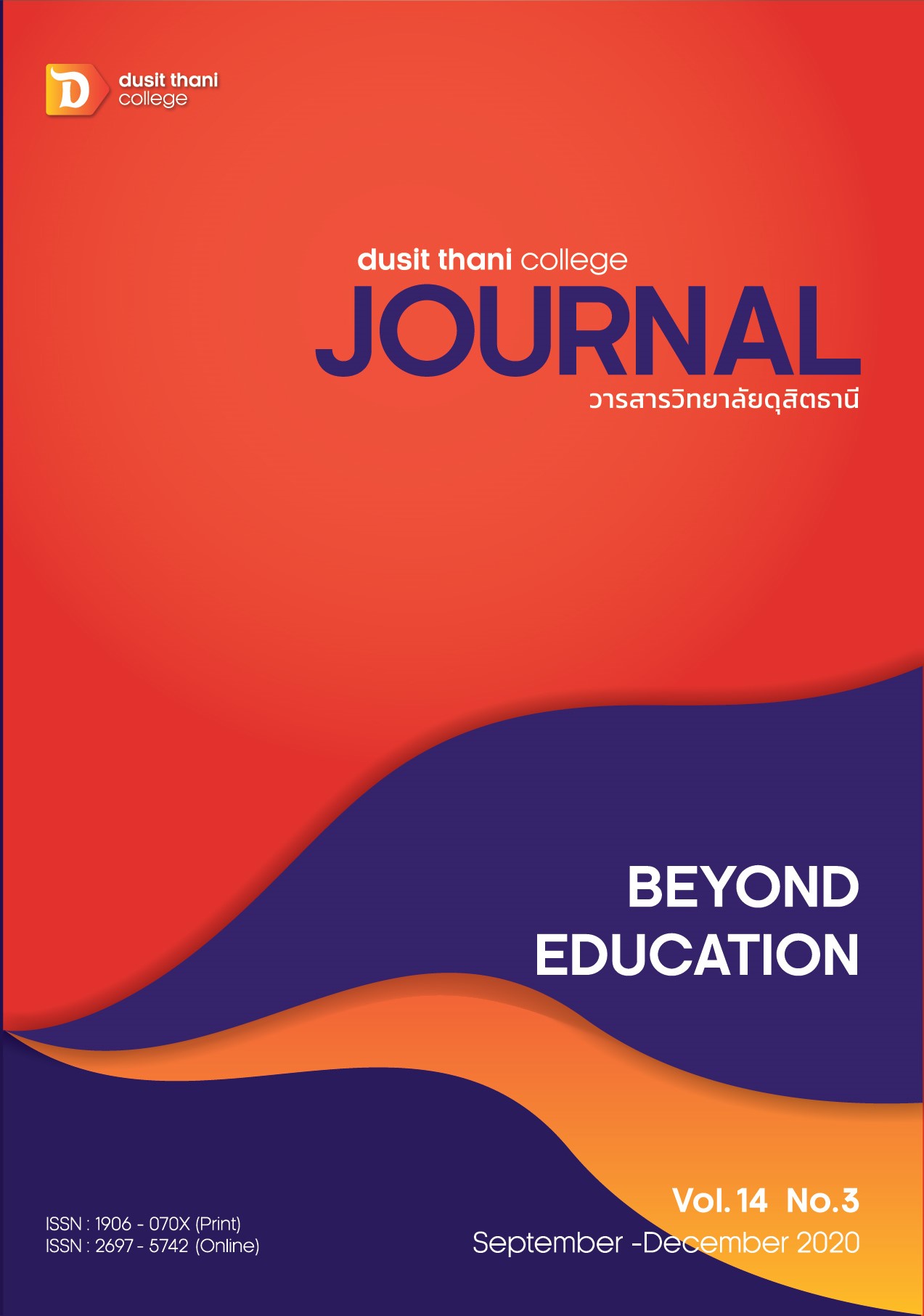Analysis of Internal and External Environment of Community-based Tourist in the North of Thailand
Main Article Content
Abstract
This research aimed to study the internal factors (strengths, weaknesses) and external factors (opportunities, obstacles) of community tourism in northern Thailand. This research employed a qualitative method. The population and sample used in the study were community-based tourism stakeholders who attended the workshop. The samples were obtained by purposive sampling and data were collected by participating in workshops and in-depth interviews. The finding revealed that the external potential was: policy of the government as a national agenda, Kinnaree Award Standards, and the trend of conservation of natural resources. The external barriers including seasons (very difficult rainy season), limited tourist areas, economic slowdown, the impacts from the occurrence of natural disasters both within the country and outside the country, and political instability. The internal strength of the unique community attractions were natural resources, beautiful works, and abundant cultural traditions, community products are unique, strong leadership and unity of the people in the community. A solid tourism network. The internal weakness was the lack of budget, community personnel still lack the knowledge regarding community-based tourism management, most of the community members are elderly, the lack of promotion and marketing, and the transport routes to reach the tourist attractions are still not easily accessible. In the analysis of strategic factors, the total weighted score of the Internal Factor Environment (IFE matrix) was 2.35. The External Factor Environment Weighted Score (EFE matrix) is 2.20. This illustrated that the intersection area falls into a fixed strategy. Therefore, the northern area should focus on inhibition strategies or actions with caution (Pause or Proceed with Caution Strategy), 2. No Change Strategy, finally profit Strategy.
Article Details
Article Screening Policy
- All research and academic articles to be published must be considered and screened by three peer reviews in the relevant field / article.
- All articles, texts, illustrations and tables published in the journal are the personal opinions of the authors. Editors don't always have to agree. And no responsibility whatsoever is the sole responsibility of the author.
- The articles to be published must never be published. Where did you first publish? And not in the consideration of other journals If the audit found that there has been a duplicate publication It is the sole responsibility of the author.
- Any article that the reader sees as being plagiarized or impersonated without reference. Or mislead the work of the author Please let the journal editor know it will be your greatest blessing.
References
David, F. R. (2004). Strategy Management Concept and Case. 9 th ed. Prentice Hall.
Fennell, D. A. (1999). Tourism ethics. Canada: Brock University. Kiss, A. (2004). Is CBE A Good Use of Biodiversity Conservation Funds? Trends in Ecology and Evolution, 19(5), 232-237.
Kagohnnan, N. (2009). Strategic management. Bangkok: SE-ED.
Kittisarn, K. (2015). Strategic management for adventure tourism in Mae Ram, Mae Rim district Chiang Mai province. (Master’s degree), Chiang Mai Rajabhat University, Chiang Mai.
Khewpairee, V. (2007). Human Resource Development. Bangkok: Dhonburi Rajabhat University.
Ministry of Tourism & Sports and Designated Areas for Sustainable Tourism. (2016). Strategic plan on community-based tourism 2016-2020. Bangkok: Ministry of Tourism and Sports and Designated Areas for Sustainable Tourism Administration (Public Organization).
Namsirikul, K. (2000). Strategy & Business. Bangkok: Chulalongkorn University Printing House.
Noosut, K. (2019). Development of Community-based Tourism Based on the Grassroots Economy Concept. Local Administration Journal, 12(3), 481-496.
Pengnorapat, U. (2018). The Strategies for the Development of the Cultural Tourism Potentiality in Sisaket Province. Journal of Thai Hospitality and Tourism, 12(2), 28-43.
Pongwiritthon, R. and Syers, K. (2016). Guidelines for Sustainable Chiang Mai Tourism Development According to the Attitude of Tourists. Journal of Humanities and Social Sciences Thonburi University, 10(22), 61-66.
Sarobon, S. and Wongtabtim, U. (2003). Community-Based Tourism Conceptualized and Experienced from North Thailand. Chiang Mai. Vanida Press.
Sproule, K. W. (1996). Community-Based Ecotourism Development: Identifying Partners in the Process. The Ecotourism Equation: Measuring the Impacts. Bulletin Series Yale School of Forestry and Environmental Studies, Number 99. New Haven CT: Yale University, 233-250.
Sriharun, P. and Kampetch, P. (2018). Community Tourism: A New Alternative to Sustainability. Dusit Thani College Journal, 12(3), 118-132.
SuanSri, P. (2003). Community Based Tourism Handbook. Bangkok: Responsible Ecological Social Tour.
Thailand Community Based Tourism Institute. (2012). Community Based Tourism.
Retrieved September 1, 2017 from http://communitybasedtoursim.wordpress.com.
Thong-In, A. (2015). Strategic management approach for cultural Tourism site: case study
Ban Kan Lueang archaeological site, Muang district, Ubon Ratchathani province.
(Master’s degree), Ubon Ratchathani University.
Tiapiboon, P. (2014). Potential of community-based ecotourism at Hua-Noun Wat community, Mae-tom sub - district, Bangkum district, Songkla Province.
Thesis (Environmental Management), Prince of Songkla University. Songkla.
Wheelen, T. L., and Hunger, J. D. (2012). Strategic management and business policy: toward global sustainability. 13th ed. New Jersey: Pearson.


